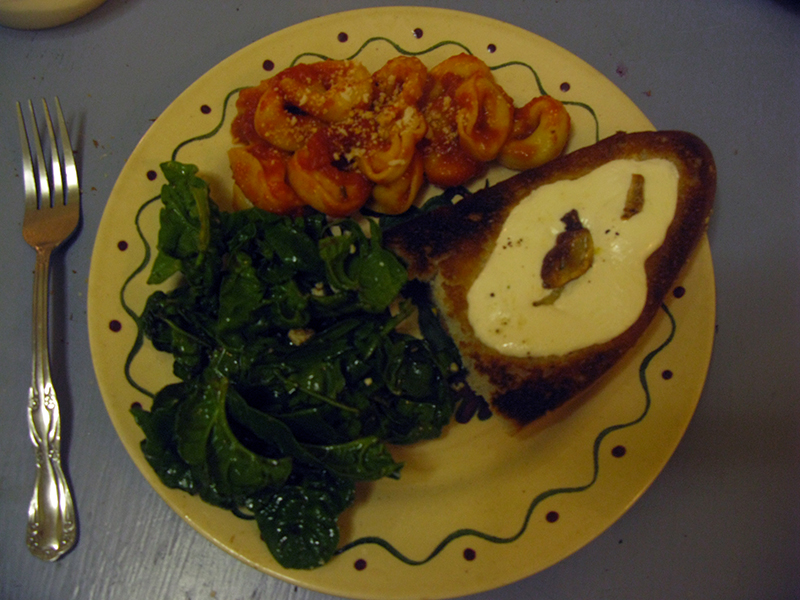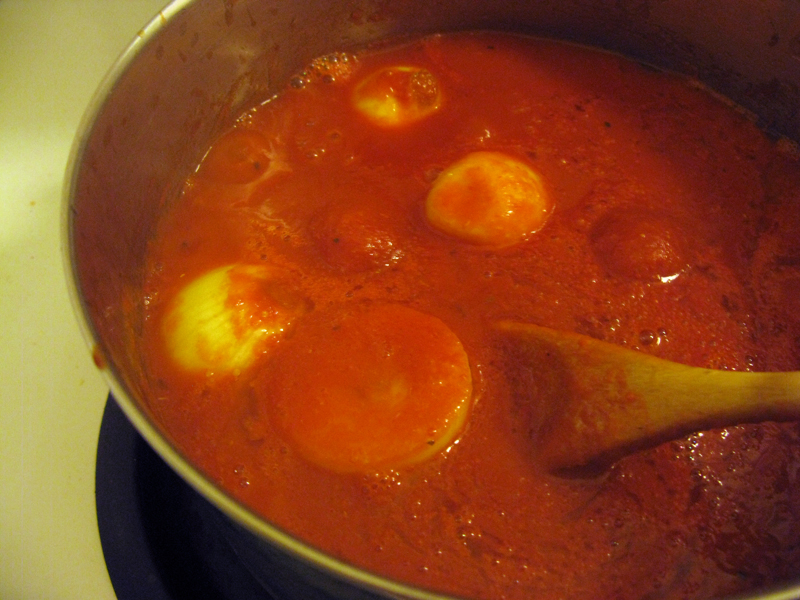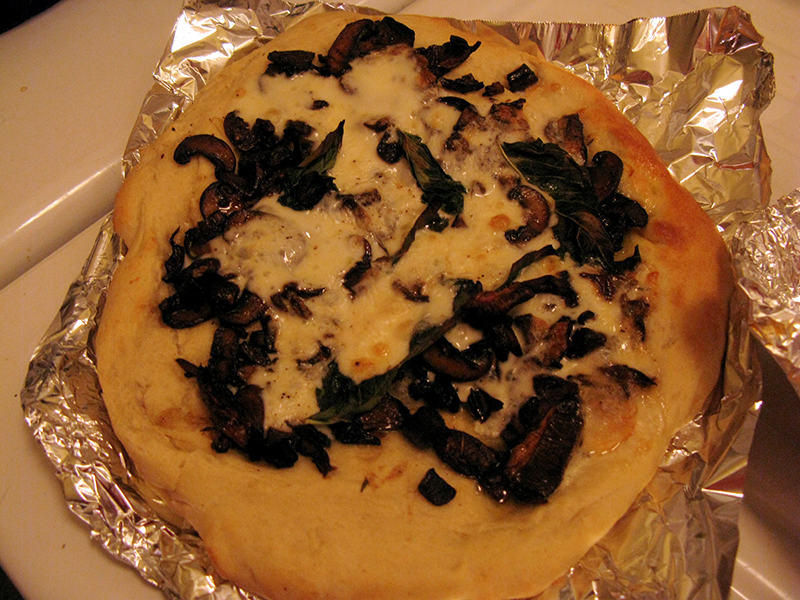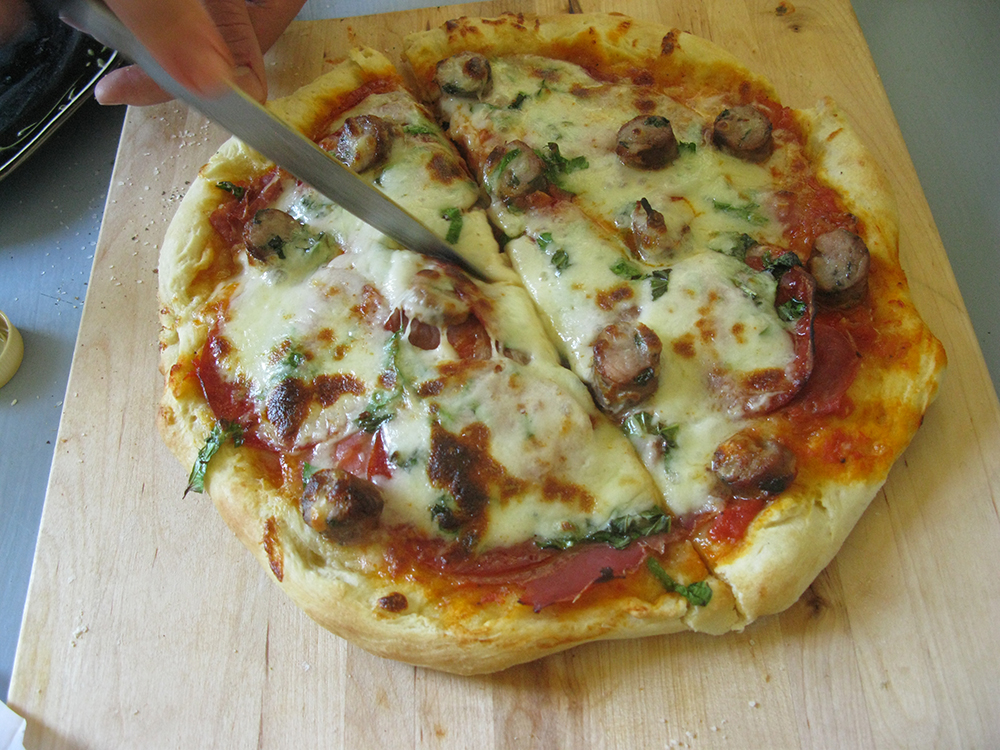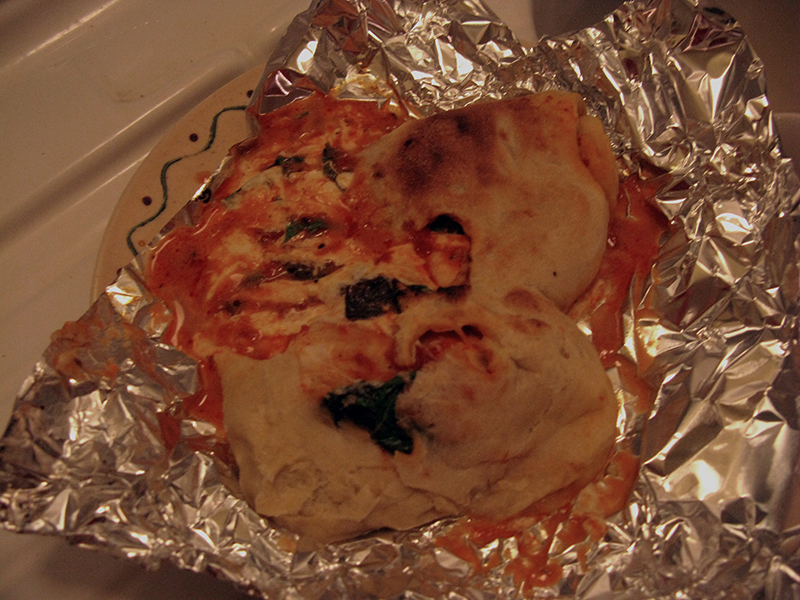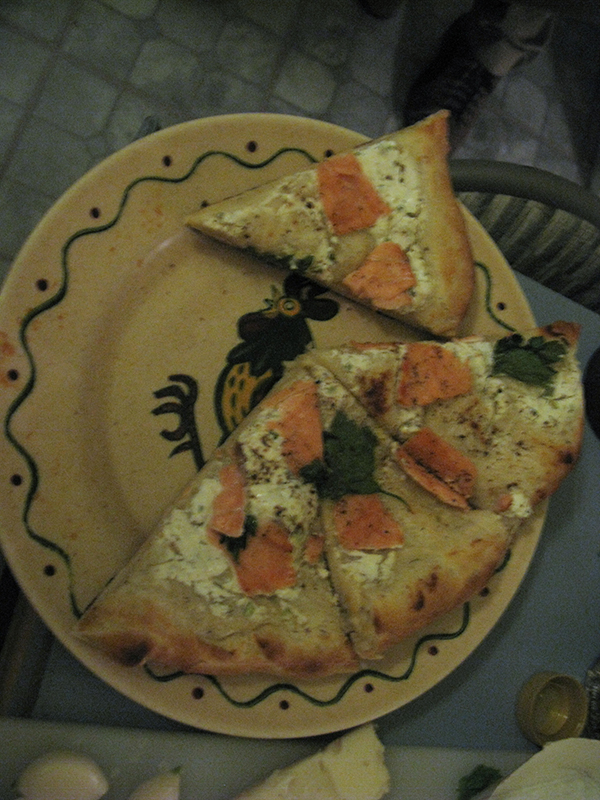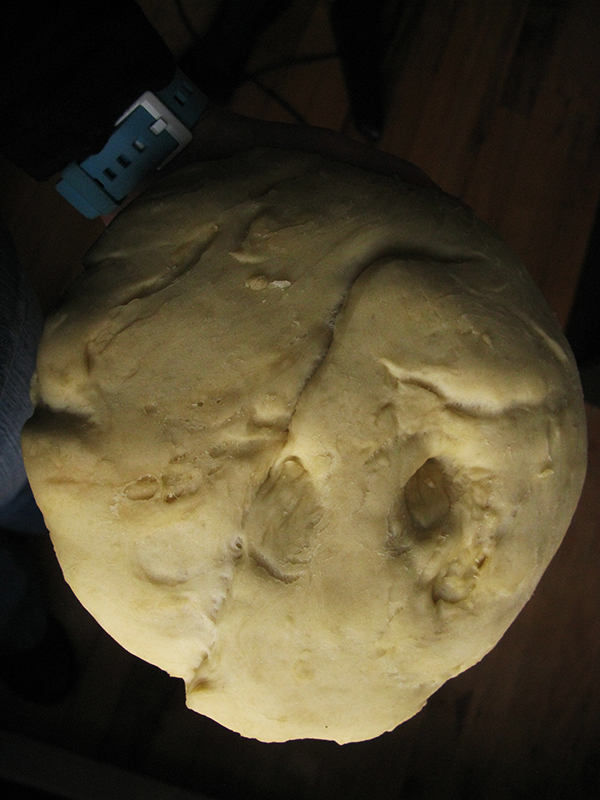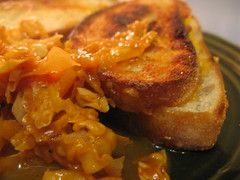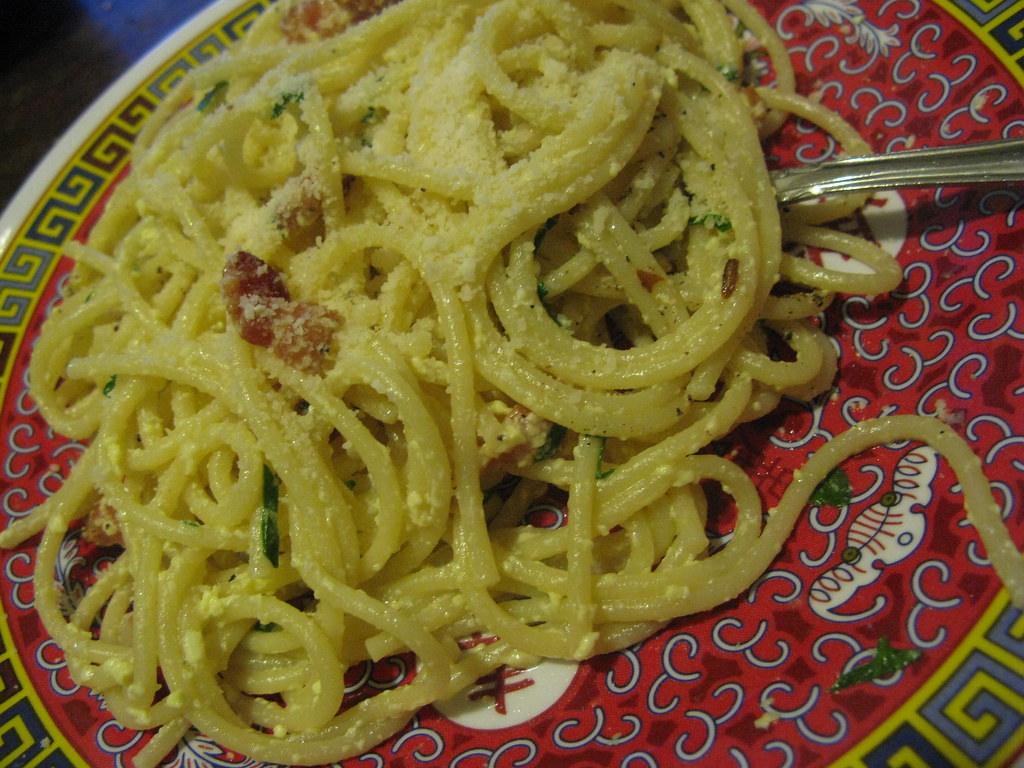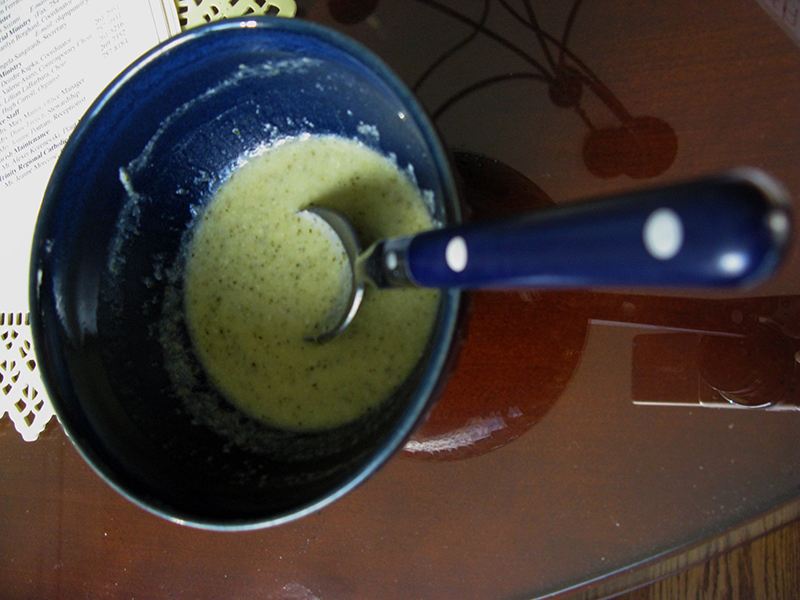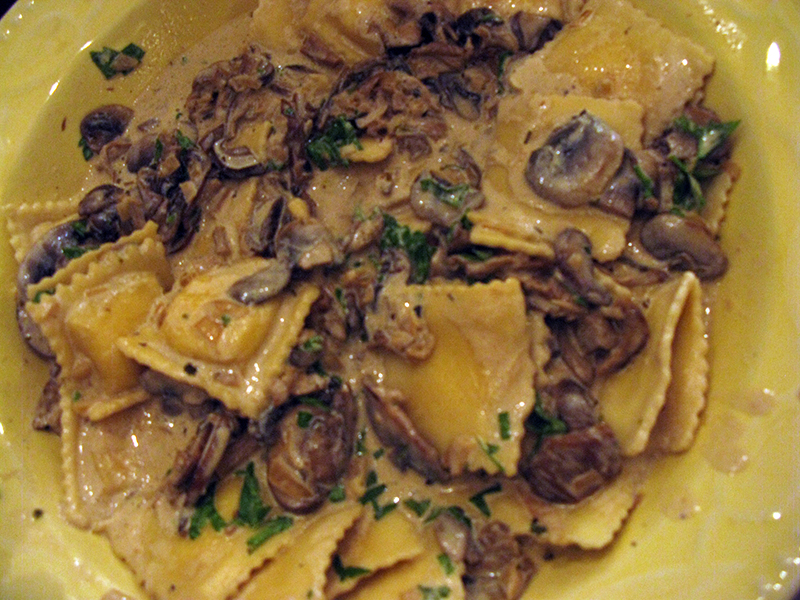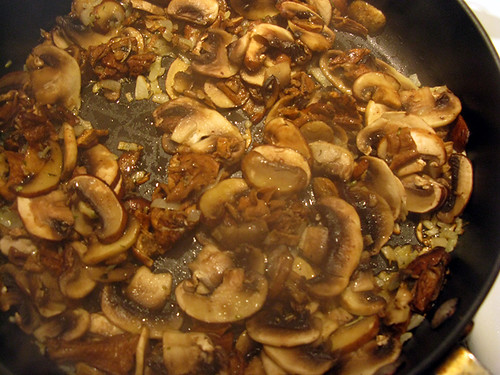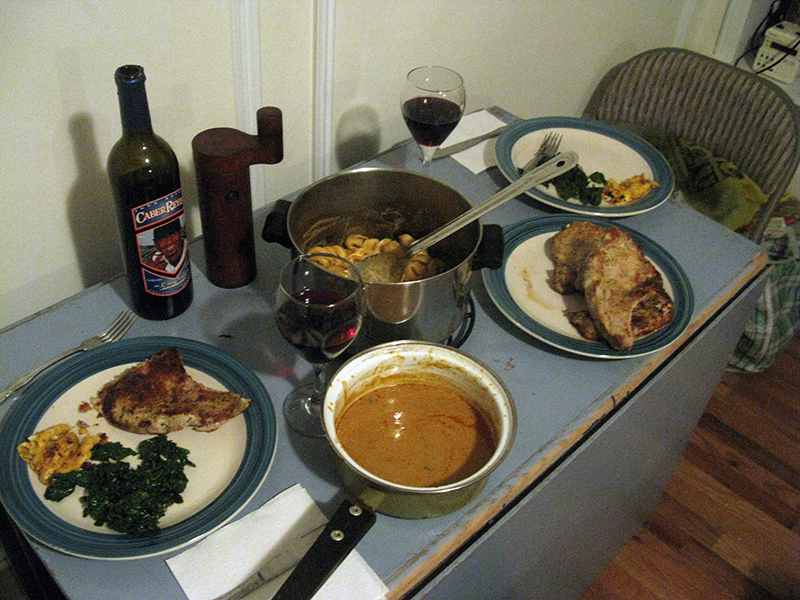 dinner on 5th ave
dinner on 5th aveThat was the first meal Nathan and I enjoyed in my new Harlem apartment. I have to admit, after a long and exhausting move, to a kitchen with 18 inches of usable counter space, I wasn't in the mood to prepare a big meal. Instead, I breaded and fried some pork chops, an easy favorite of mine. I also cooked up the extra egg and breadcrumbs afterward, which is always a yummy extra treat. For the starch and the veggie I sauteed some spinach and cooked up some tortellini. This time, I went for something a little more unusual than tomato sauce: I defrosted the lobster sauce I had made some months ago while preparing an Alice Water's recipe for lobster stuffed cabbage rolls. We paired it all with a Jose Reyes branded Cabernet that Lauren and Grace had so generously given me. Yes, Jose Reyes has his own wine. Let's go Mets.
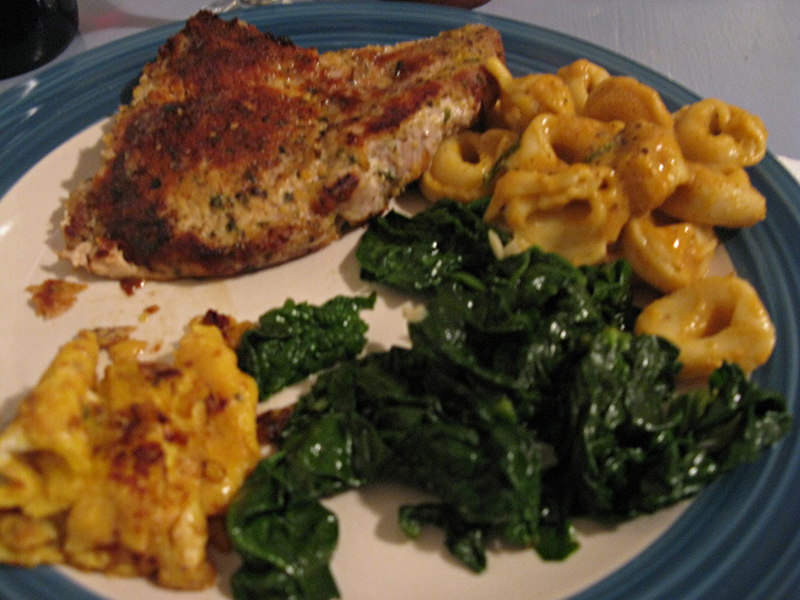 a great way to kick off cooking in my new home
a great way to kick off cooking in my new homeNathan and I had made the initial lobster dish for his mom and his grandma, who had previously given me the Chez Panisse Menu Cookbook after we went to the restaurant for what was an absolutely amazing meal. When we tried to recreate Chez Panisse's amazing food in Chelsea, it was among one of the most time consuming and ambitious meals I had ever prepared. However, it did yield lots and lots of a very delicious and flavorful creamy lobster sauce, which was great over Borgatti ravioli, linguini and the tortellini pictured above.
As for Alice's cabbage and lobster, I think it was a particularly impressive meal, and so I've included the recipe, which Nathan and I followed pretty faithfully. However, Alice has a whole crazy menu with lamb and shit that she serves her lobster with as part of a four course meal at Chez Panisse. With a dish this labor intensive, that was obviously not happening. (As it was, we were cooking for four hours, much to Nathan's grandma's displeasure.) So, when Alice says it serves six, keep in mind that is as first course, not a main. We only accompanied our meal with a nice loaf of french bread, and it comfortably fed four, with lots of left over sauce.
So, without further ado:
Lobster in Cabbage Leaves with Roasted Peppers
(from Alice Waters' Chez Panisse Menu Cookbook, published in 1982)
serves 6
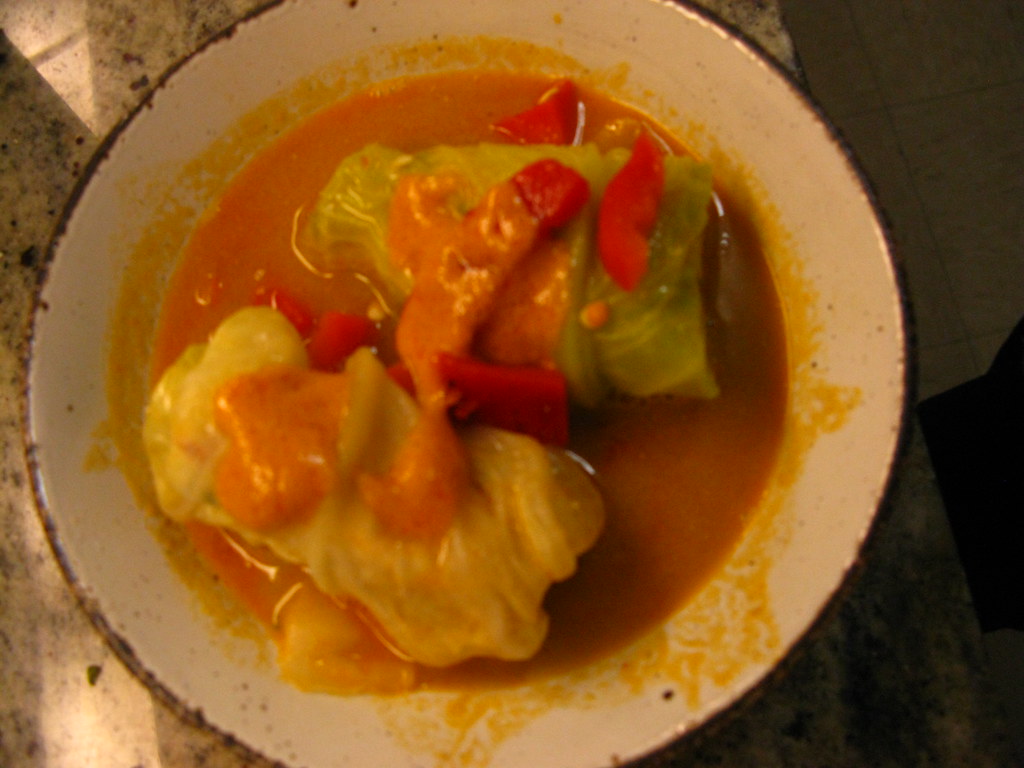 lobster in cabbage leaves with roasted red peppers
lobster in cabbage leaves with roasted red peppersThe Cabbage:
1 head savoy cabbage, about 1½ pounds
Cut out the cone-shaped heart of a firm green savoy cabbage. Remove the outer leaves and blanch the whole cabbage in boiling salted water for 2 to 3 minutes. Drain. When the cabbage is cool enough to handle, separate the leaves and blanch them for 1 to 2 minutes. Drain them and dry them well. Cut out the large ribs of 12 leaves and blanch them for 1 to 2 minutes. Drain them and dry them well. Cut out the large ribs of 12 leaves and trim them into rectangles about 5 inches by 3 inches.
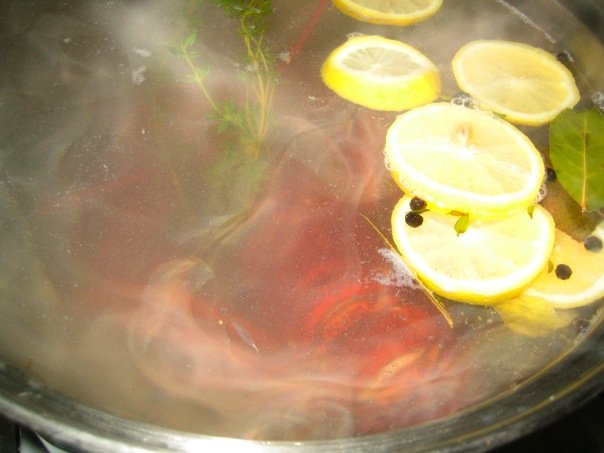 boiled alive
boiled aliveTo Cook the Lobster:
3 lively lobsters, 1 to 1½ pounds each
½ cup coarse sea salt
2 bay leaves
4 sprigs thyme
1 lemon
10 to 12 black peppercorns
Prepare a court-bouillon of 8 to 10 quarts water, ½ cup coarse sea salt, 2 bay leaves, 4 thyme sprigs, 1 sliced lemon, and 10 to 12 black peppercorns. Bring the court-bouillon to a rapid boil and cook the lobsters in it for about 3 to 4 minutes. Remove the lobsters. Strain and reserve the court-bouillon. When the lobsters are cool enough to handle, remove the meat from the tails and claws and reserve it. Remove the gravelly stomach sac and discard it; reserve the shells and the coral, if any.
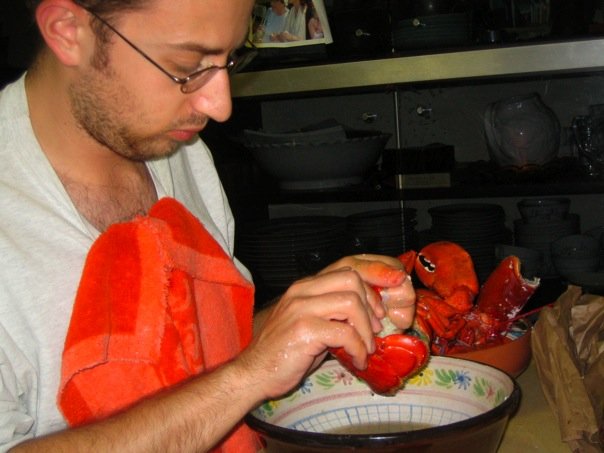 dismemberment
dismembermentThe Lobster Bisque:
The reserved shells (and coral) from the cooked lobster
2 table spoons olive oil
¼ pound unsalted butter
2 medium carrots
2 medium onions
1 medium leek
1 celery rib
3 shallots
2 tablespoons Armagnac or Cognac
1 cup white wine
3 medium tomatoes
Heat 2 tablespoons olive oil over medium-high heat and saute the shells of the lobsters for 3 minutes. Reduce the heat to medium and add ¼ pound butter (and the reserved coral). Cook over very low heat until the butter melts. Trim and dice finely 2 carrots, 2 onions, 1 leek, 1 celery rib, and 3 shallots. Add the vegetables to the pan and cook over medium heat for 5 minutes. Increase the heat and flame with 2 tablespoons Armagnac or Cognac. Add 1 cup white wine, 3 chopped tomatoes, and water to barely cover. Simmer for 30 minutes. Break the shells in a blender and force the shells and sauce through a very fine sieve. Let the sauce rest for 5 minutes to allow the butter to rise to the surface. Skim the butter and reserve it.
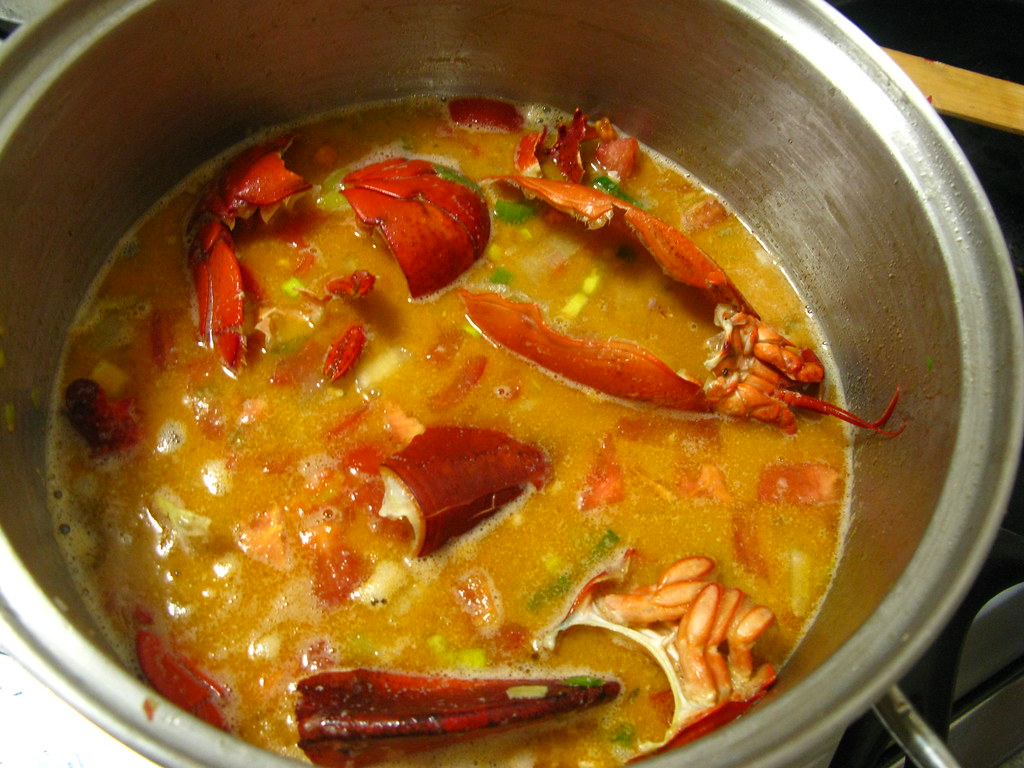 lobster bisque simmering
lobster bisque simmeringTo Assemble the Lobster Packages:
The prepared cabbage leaves
The reserved lobster meat
The reserved lobster butter
12 chervil sprigs
The strained court-bouillon
Allow one half of a claw and one quarter of a tail for each package. Lay the 12 cabbage leaves flat on a worktable. Place the lobster meat, red side down, in the lower center of the leaves. Drizzle some lobster butter over each package and put a sprig of chervil on top of each. Fold the bottom of each leaf over the lobster, then fold in the sides and roll forward over the top of the lead to make a tightly closed package. Steam the packages to 8 to 10 minutes over the simmering court-bouillon.
 cabbage lobster rolls in the steamer
cabbage lobster rolls in the steamerThe Sauce and the Garnish:
The lobster bisque
½ pound unsalted butter
1 small red pepper, roasted, peeled, and cut into ¼-inch dice
12 chervil sprigs
Reduce the lobster bisque by half over high heat and whisk in ½ pound butter, cut into bits and softened. Remove the sauce from the heat.
Place the lobster packages on warm plates and spoon the sauce over them. Garnish with the diced peppers and chervil.
Labor intensive, but undeniably delicious, successfully preparing this dish gave Nathan and me a huge sense of accomplishment. However, we did make a couple of changes and had a few difficulties which I guess I should make note of:
1. We did not trim the cabbage leaves into rectangles, which seemed overly fussy and a waste of perfectly good cabbage. I see no reason you should either. I also am not sure what savoy cabbage is, but I used a slightly purply looking one I had gotten from the food co-op, and it was just fine.
2. The trickiest step was breaking down the bisque in the blender. Alice says to break the shells in the blender, so we wasted a good deal of time trying to do this in a leaky food processor. Personally, I don't see the point. In our attempts to force the shells through a sieve, we wound up with some tiny tiny but still crunchy pieces of lobster shell, which was kind of gross. If I made this again, I would strain the sauce and remove the shells, making sure they didn't have any of the vegetables lodged inside. Then, I would go to town with my immersion blender. I probably wouldn't even use the sieve, although I'm sure it'd be smoother and more velvety that way.
3. We couldn't find chervil, which I must admit I've never cooked with, so I don't really know what it tastes like or if it would have improved the dish. I do know there were supposed to be chervil sprigs in each cabbage roll, and that fresh thyme sprigs were not a great substitution-- the stems are too woody.
4. We had spent hours getting everything done, and rolled and steamed all our little lobster packages only to discover that we should have been reducing the bisque by half all along. By this point, we had one very impatient and hungry grandmother on our hands, and bisque that was taking forever to reduce. We ended up serving it in a thinner, more broth-like state, without the extra half pound (!!) of butter. It was like a cabbage lobster roll in a bowl of lobster soup. I reduced the large amount of leftover broth the next day, and it was definitely better for it, although it was still really delicious and incredibly flavorful as we served it.
5. OK, there is no note five, but I felt strange leaving off at four, so let me just say that I'd probably just make the bisque part of this recipe and do something else with the lobster. I might just even eat it plain with melted butter. Yum. Or make lobster roll sandwiches, which I love. This is not to say that the cabbage rolls weren't tasty, but they did hide the beautiful lobster, and I'd like to try serving my lobster in a different way next time. However, I'd DEFINITELY use the shells to make the amazing and delicious bisque. So. Good.
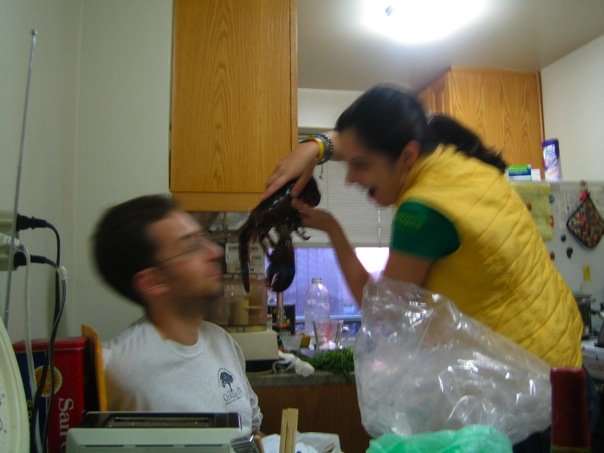 not the liveliest lobster, but still slightly startling, right Nathan?
not the liveliest lobster, but still slightly startling, right Nathan?
